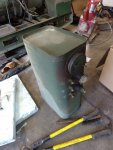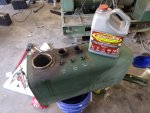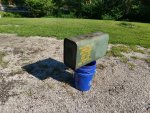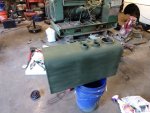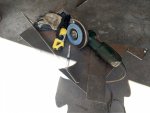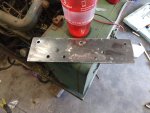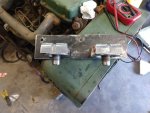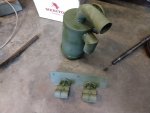OK, I guess we start with S7. I think its a likely candidate also, but we are starting in the middle of the circuit. Its easy to check. Both links above get you started, but don't teach you how to use the schematics. The one kinda misleading thing about these two links is, you jump to conclusions. People tend to read the posts, assume the S7 is bad, and rub their hands together and take the S7 out, and apart, to "fix" it. When, all you really know is that it wont start. First PROVE its the S7, then you can get out that tool kit. Not before. You can fix this set to death, if you don't watch out. Never assume anything. Prove it.
1. Find S7 on the schematics. As you can see, its in series with K3 coil. K3 is the crank relay. That's the baby we need to energize to turn the starter.
2. As you can see, the 24 volts goes in on J16A, through the S7, and out J16B, to energize the K3 Coil. The J16 is the canon plug near the oil filter.
3. Unscrew the J16. We can do three tests here.
A. Take your multi meter and set it for ohms. Measure for continuity on the two wires, (P59B16 and P55F16) that run down to the S7. You should get continuity, as the S7 is in a normally closed condition when the engine is not powered up, and when the engine spools down to a certain RPM. So, no continuity, S7 is not working right.
B. Second check, and the one done most often, is simply hold the J16 in your hand, look at the face of the plug, and find holes A&B. Take a paper clip, (he is your good friend from now on) bend it straight, then into a U shape. Stick your new friend into holes A&B. Walk around to the control panel, and turn the S1 to the start position. If the motor turns over, the problem is in the S7.
C. Set your meter up for DC voltage. It helps to have a friend with this one. You poke one lead into hole A, of J16. The other lead goes to a GOOD ground. Your friend turns S1 to the start position, and you should read 24 VDC. If not, the problem is in the control panel. So try this stuff, and let us know what happens.


